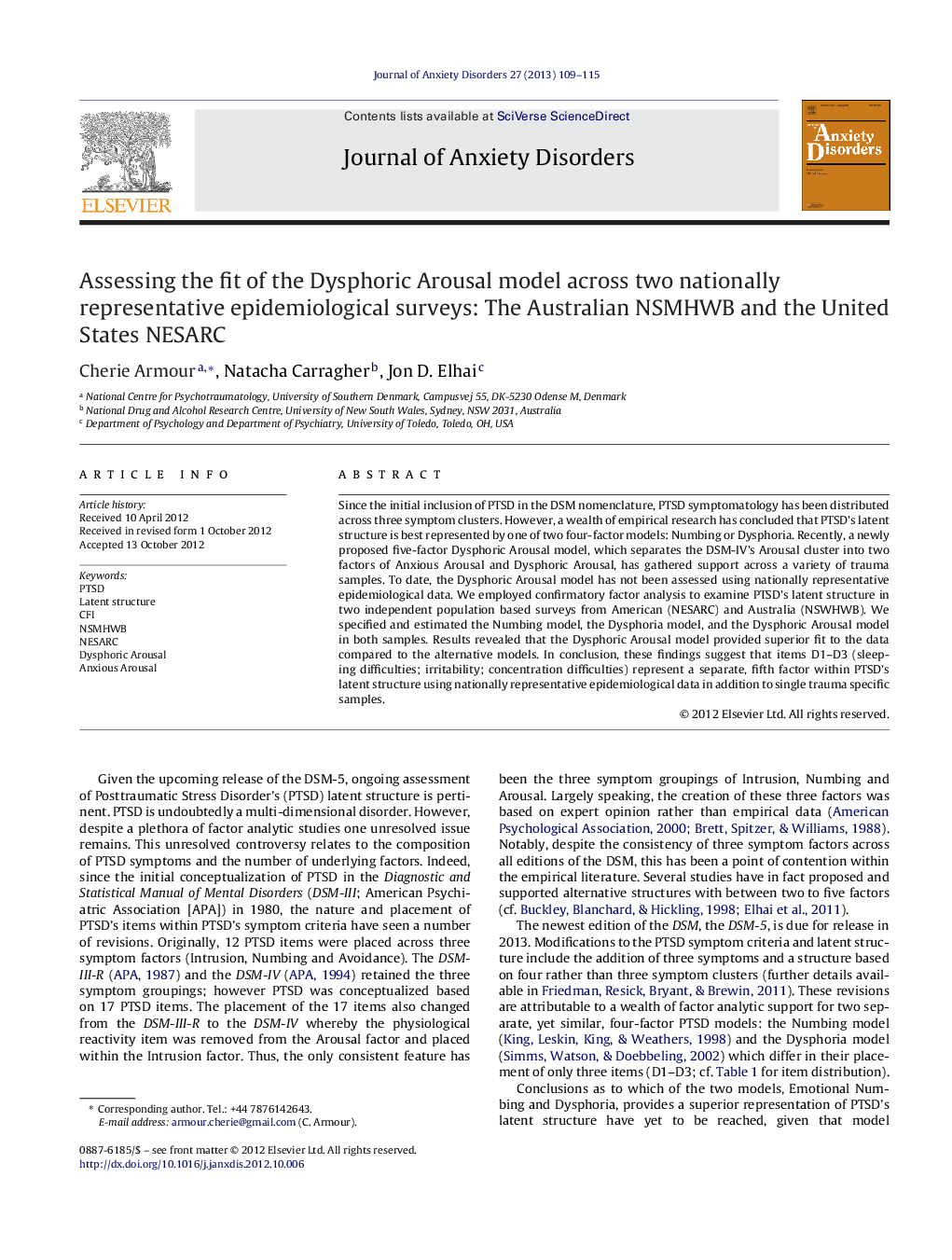| کد مقاله | کد نشریه | سال انتشار | مقاله انگلیسی | نسخه تمام متن |
|---|---|---|---|---|
| 909709 | 917305 | 2013 | 7 صفحه PDF | دانلود رایگان |

Since the initial inclusion of PTSD in the DSM nomenclature, PTSD symptomatology has been distributed across three symptom clusters. However, a wealth of empirical research has concluded that PTSD's latent structure is best represented by one of two four-factor models: Numbing or Dysphoria. Recently, a newly proposed five-factor Dysphoric Arousal model, which separates the DSM-IV's Arousal cluster into two factors of Anxious Arousal and Dysphoric Arousal, has gathered support across a variety of trauma samples. To date, the Dysphoric Arousal model has not been assessed using nationally representative epidemiological data. We employed confirmatory factor analysis to examine PTSD's latent structure in two independent population based surveys from American (NESARC) and Australia (NSWHWB). We specified and estimated the Numbing model, the Dysphoria model, and the Dysphoric Arousal model in both samples. Results revealed that the Dysphoric Arousal model provided superior fit to the data compared to the alternative models. In conclusion, these findings suggest that items D1–D3 (sleeping difficulties; irritability; concentration difficulties) represent a separate, fifth factor within PTSD's latent structure using nationally representative epidemiological data in addition to single trauma specific samples.
► The Numbing, Dysphoric and Dysphoric Arousal models all resulted in excellent fit in the NESARC data.
► The Dysphoric and Dysphoric Arousal models resulted in excellent fit, whereas the Numbing model resulted in acceptable fit in the NSMHWB data.
► Chi2 difference testing revealed that the Dysphoric Arousal model fit significantly better than the Numbing and Dysphoria models in both datasets.
► The Dysphoric Arousal model is the optimal representation of PTSD's latent structure in nationally representative epidemiological data.
Journal: Journal of Anxiety Disorders - Volume 27, Issue 1, January 2013, Pages 109–115